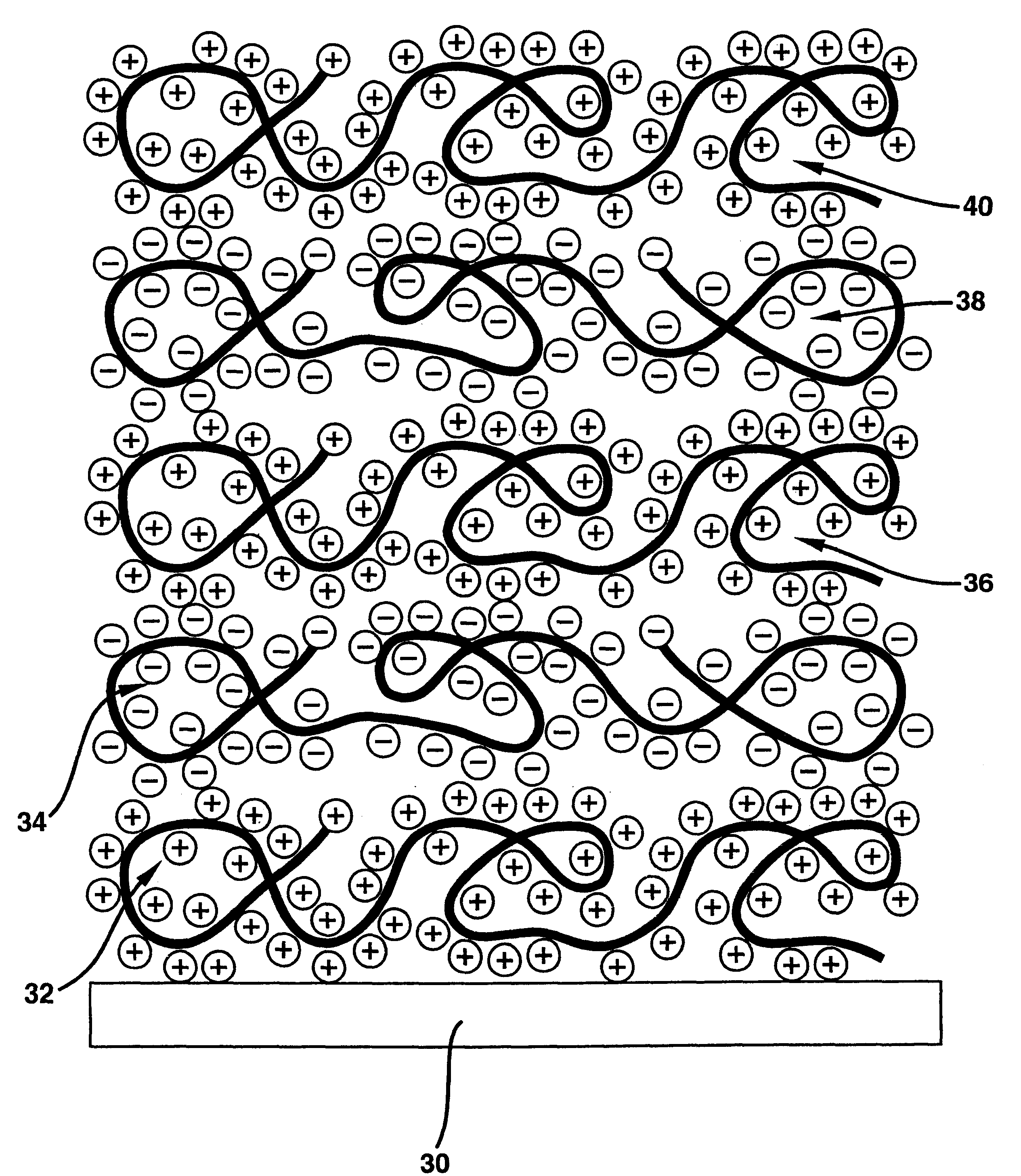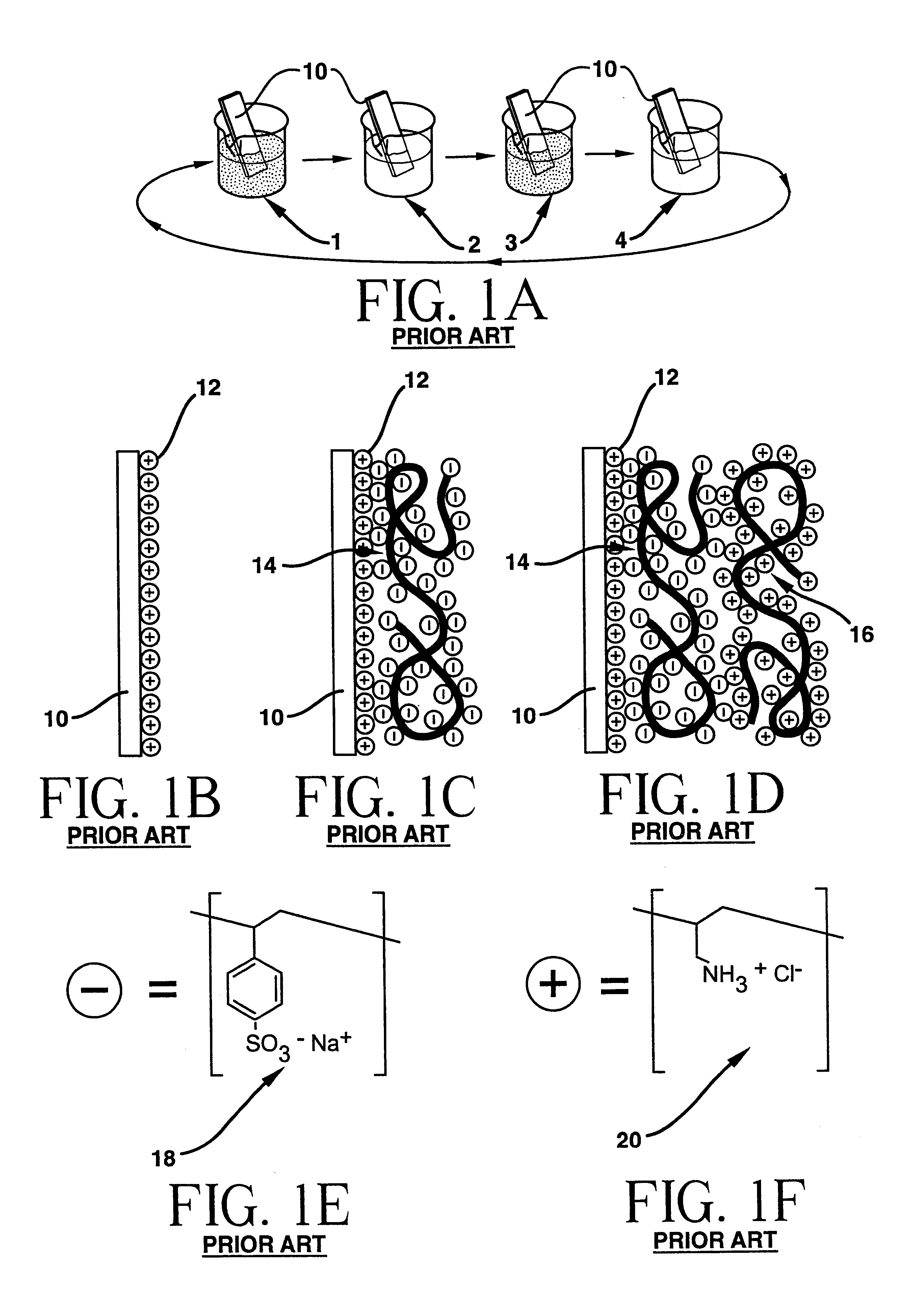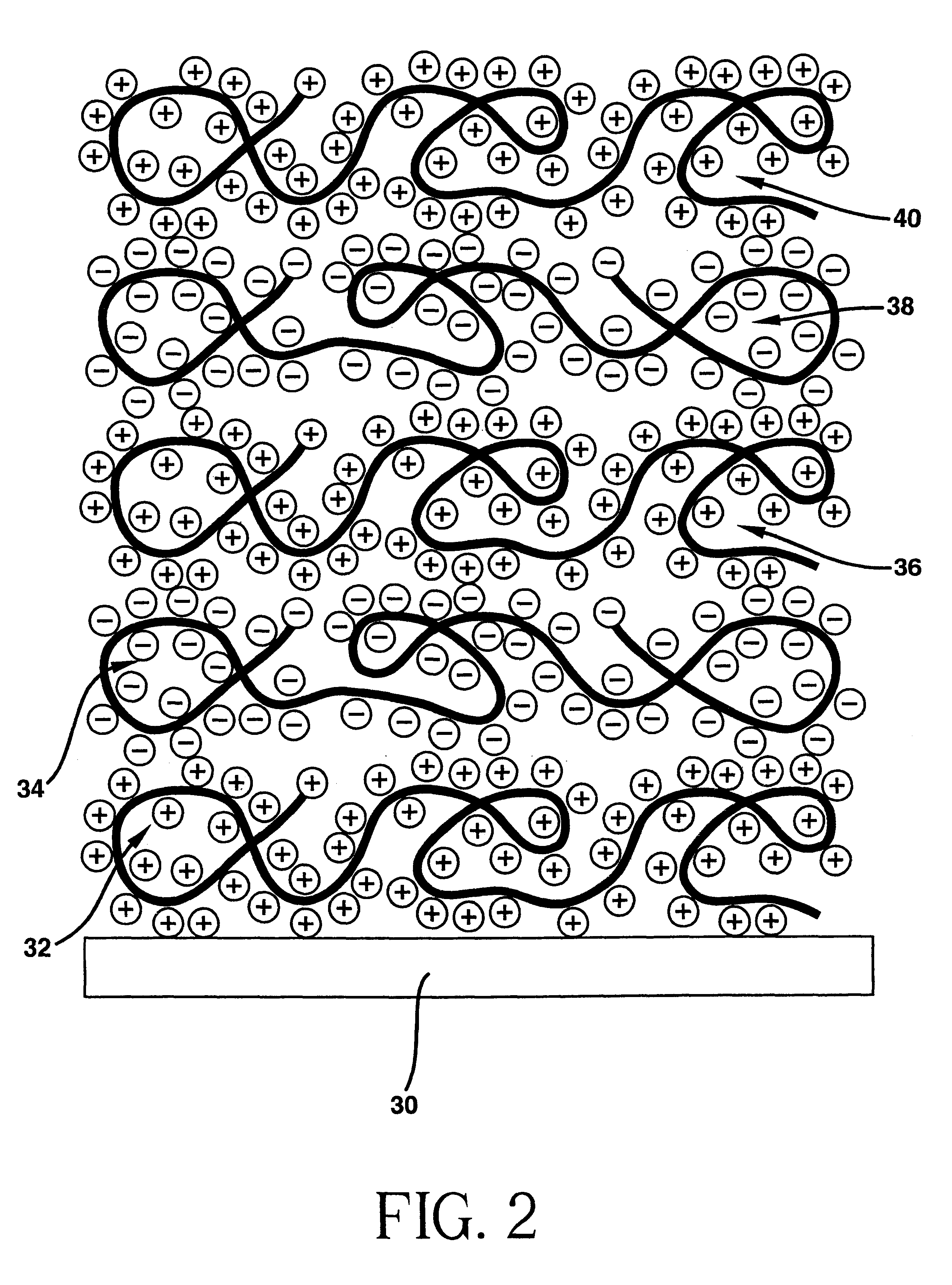Polyanion/polycation multilayer film for DNA immobilization
a polyanion/polycation multi-layer film and immobilization technology, applied in the field of polyanion/polycation multi-layer film for dna immobilization, can solve the problems of limited size of substrates to be coated by the lb method, inability to be modified to achieve a desired surface,
- Summary
- Abstract
- Description
- Claims
- Application Information
AI Technical Summary
Problems solved by technology
Method used
Image
Examples
Embodiment Construction
Fourteen ESCO.TM. (Erie Scientific Co., Portsmouth, N.H.) soda lime slides were used in this example as the substrate. Two substrates were prepared with 1 bilayer, two substrates were prepared with 3 bilayers, six substrates were prepared with 5 bilayers, two substrates were prepared with 7 bilayers, and two substrates were prepared with 9 bilayers. Each of the fourteen slides was prepared with an outermost polycation layer.
In preparation for the experiment the slides were cleaned. The cleaning procedure used resulted in some negatively charged silicon oxide moieties on the surface, which were subsequently electrostatically bound to a positively charged polyelectrolyte.
Throughout the experiment the slides were manipulated with plastic or Teflon tweezers and processed and stored in plastic or Teflon beakers.
First, the slides were cleaned in a solution of 50:50 mixture of hydrogen peroxide (30%, electronic grade) and sulfuric acid (98%, electronic grade). Second, the slides were rinse...
PUM
| Property | Measurement | Unit |
|---|---|---|
| surface roughness | aaaaa | aaaaa |
| surface roughness | aaaaa | aaaaa |
| surface roughness | aaaaa | aaaaa |
Abstract
Description
Claims
Application Information
 Login to View More
Login to View More - R&D
- Intellectual Property
- Life Sciences
- Materials
- Tech Scout
- Unparalleled Data Quality
- Higher Quality Content
- 60% Fewer Hallucinations
Browse by: Latest US Patents, China's latest patents, Technical Efficacy Thesaurus, Application Domain, Technology Topic, Popular Technical Reports.
© 2025 PatSnap. All rights reserved.Legal|Privacy policy|Modern Slavery Act Transparency Statement|Sitemap|About US| Contact US: help@patsnap.com



